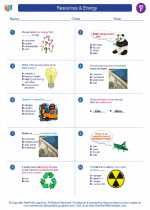Wyoming: The Equality State
Wyoming is a state located in the mountain region of the western United States. It is the 10th largest state by area and the least populous, with a rich history and diverse geography.
Geography
Wyoming is known for its diverse geography, including majestic mountain ranges, vast plains, and iconic landmarks such as Yellowstone National Park and Grand Teton National Park. The state is also home to the Continental Divide, which separates the watersheds that flow into the Pacific Ocean and the Atlantic Ocean.
History
Wyoming has a unique history, particularly in relation to women's rights. It was the first state to grant women the right to vote and hold public office in 1869, earning it the nickname "The Equality State." This progressive stance on women's rights was a significant milestone in the fight for gender equality in the United States.
Economy
Wyoming's economy is heavily dependent on natural resources, particularly mining, agriculture, and energy production. The state is a leading producer of coal, natural gas, and uranium, and its vast open spaces make it ideal for ranching and farming.
Study Guide
- What is the nickname of Wyoming, and why is it called that?
- Identify and describe two major national parks located in Wyoming.
- Explain the significance of Wyoming's role in the history of women's rights.
- What are the key industries that drive Wyoming's economy?
- Describe the geography of Wyoming, including its major geographical features.
Use this study guide to explore the rich history, geography, and culture of Wyoming, and gain a deeper understanding of this unique state in the American West.
[Wyoming] Related Worksheets and Study Guides:
.◂Social Studies Worksheets and Study Guides Sixth Grade. Resources & Energy

 Worksheet/Answer key
Worksheet/Answer key
 Worksheet/Answer key
Worksheet/Answer key
 Worksheet/Answer key
Worksheet/Answer key
